Lavender tea
$25 Original price was: $25.$18Current price is: $18.
- Product name: Lavender tea
- Origin: Viet Nam
- Ingredients: 100% naturally dried lavender flower, no flavoring or preservatives.
- Size: 30gr
- Store in a dry, cool place, away from direct light
Lavender tea is a fragrant and soothing herbal infusion made from the dried buds of the lavender plant. Known for its calming aroma and delicate floral flavor, this tea has been enjoyed for centuries for its potential health benefits, including stress relief, improved sleep quality, and digestive support. Whether sipped as a warm bedtime drink or enjoyed iced on a hot day, lavender tea offers a relaxing and refreshing experience.
In this article, we’ll explore its benefits, how to brew it, and why it has become a favorite among herbal tea lovers.
Product information lavender tea
- Product name: Lavender tea
- Origin: Viet Nam
- Ingredients: 100% naturally dried lavender flower, no flavoring or preservatives.
- Size: 30gr
- Store in a dry, cool place, away from direct light
What is lavender tea?
Lavender tea comes from the dried buds of the Lavandula angustifolia plant, commonly known as English lavender. This fragrant herb has a rich history dating back thousands of years, with its origins traced to the Mediterranean region, including present-day France, Spain, and Italy. The ancient Egyptians, Greeks, and Romans highly valued lavender for its aromatic, medicinal, and therapeutic properties.
It was used in perfumes, bath rituals, and healing balms, as well as in early forms of herbal medicine to promote relaxation and relieve ailments.
During the Roman Empire, lavender was widely cultivated and introduced to different parts of Europe, where it became an essential ingredient in herbal remedies. Monks in medieval monasteries also grew lavender in their gardens, using it to make medicinal infusions that helped with sleep, digestion, and anxiety. Over time, the use of lavender expanded beyond medicinal purposes and became popular in culinary traditions, including herbal teas.
The tradition of brewing lavender tea likely developed as people discovered its calming effects when steeped in hot water. In traditional European herbal medicine, lavender was often combined with chamomile, mint, or lemon balm to create soothing teas for stress relief and better sleep. As herbal infusions gained popularity in different cultures, lavender tea became a well-loved beverage in regions that embraced natural wellness practices.
Today, lavender tea is enjoyed worldwide, not only for its delicate floral taste but also for its potential health benefits. Whether consumed on its own or blended with other herbs, it remains a timeless herbal infusion, cherished for its ability to promote relaxation, reduce stress, and enhance overall well-being.
Health benefits of lavender tea
Lavender tea is more than just a fragrant and soothing beverage—it is packed with potential health benefits that have made it a popular choice in herbal medicine for centuries. From promoting relaxation to supporting digestion, this herbal infusion offers a range of therapeutic effects.
- Promotes relaxation and reduces stress: One of the most well-known benefits of lavender tea is its ability to promote relaxation and reduce stress. The natural compounds in lavender, such as linalool and linalyl acetate, have calming effects on the nervous system. Drinking a warm cup of lavender tea can help ease anxiety, lower stress levels, and create a sense of tranquility, making it an excellent choice for unwinding after a long day.
- Improves sleep quality: Lavender is widely used as a natural sleep aid due to its sedative properties. Drinking lavender tea before bedtime may help improve sleep quality by calming the mind and reducing restlessness. Many people who struggle with insomnia or sleep disturbances find that lavender tea helps them relax and fall asleep more easily.
- Supports digestive health: Lavender tea is also known for its ability to soothe the digestive system. It can help relieve bloating, gas, and indigestion by relaxing the muscles in the gut and promoting healthy digestion. Additionally, its mild anti-inflammatory properties may help ease symptoms of irritable bowel syndrome (IBS) and other digestive discomforts.
- Eases headaches and migraines: Thanks to its natural anti-inflammatory and analgesic properties, lavender tea may help relieve headaches and migraines. The calming effect of lavender on the nervous system can reduce tension and stress-related headaches, while its muscle-relaxing properties may help ease migraines.
- Boosts mood and reduces anxiety: Lavender has been linked to improved mood and reduced symptoms of anxiety and depression. Drinking lavender tea may help uplift the spirit, reduce feelings of nervousness, and promote emotional balance. It works as a natural way to calm the mind without the side effects of synthetic medications.
- Supports respiratory health: The soothing and anti-inflammatory properties of lavender tea can be beneficial for respiratory health. It may help relieve congestion, reduce throat irritation, and soothe coughs. The steam from a hot cup of lavender tea can also provide relief from sinus pressure and seasonal allergies.
- Contains antioxidants: Lavender tea is rich in antioxidants, which help protect the body from oxidative stress and free radical damage. These antioxidants support overall health by reducing inflammation, boosting the immune system, and potentially lowering the risk of chronic diseases.
How to make lavender tea
Making lavender tea is simple and requires just a few ingredients. Whether you prefer it plain or blended with other herbs, this fragrant tea is a perfect way to relax and enjoy the soothing benefits of lavender.
Ingredients:
- 1 to 2 teaspoons of dried lavender buds (Lavandula angustifolia)
- 1 cup (8 ounces) of hot water (around 190–200°F or 88–93°C)
- Honey, lemon, or other herbs (optional)
Instructions:
- Boil the water: Heat fresh, filtered water to about 190–200°F (88–93°C). Avoid using boiling water, as it can make the tea taste bitter and overpower its delicate floral notes.
- Add lavender buds: Place 1 to 2 teaspoons of dried lavender buds into a tea infuser or directly into a teacup. If you prefer a milder taste, start with 1 teaspoon and adjust to your liking.
- Steep the tea: Pour the hot water over the lavender buds and let them steep for 5 to 10 minutes. The longer it steeps, the stronger the flavor will be. If you’re new to lavender tea, start with a shorter steep time to avoid an overly strong taste.
- Strain and serve: If you placed the lavender buds directly in the water, strain the tea using a fine mesh strainer before drinking. If you used a tea infuser, simply remove it from the cup.
- Add enhancements (Optional): For extra flavor, you can add honey for natural sweetness, lemon for a citrusy twist, or mix lavender with other herbs like chamomile, mint, or green tea for a unique blend.
Cold lavender tea variation: If you prefer iced lavender tea, follow the same steps but let the tea cool to room temperature before refrigerating it for a few hours. Serve over ice with a slice of lemon or a sprig of fresh mint for a refreshing drink.
How to store lavender tea properly
To maintain the freshness, flavor, and health benefits of lavender tea, proper storage is essential. Like other dried herbs, lavender buds can lose their potency over time if exposed to air, moisture, light, or heat. Here are the best ways to store lavender tea to keep it fresh for as long as possible.
- Use an airtight container: Store dried lavender buds in an airtight container, such as a glass jar with a tight-sealing lid, a metal tea tin, or a high-quality plastic container. This prevents exposure to air, which can cause the tea to lose its fragrance and flavor.
- Keep it in a cool, dark place: Store your lavender tea in a cool, dark location away from direct sunlight, heat, and humidity. A kitchen cabinet, pantry, or drawer is ideal. Avoid placing it near stoves, ovens, or windows where temperature fluctuations can degrade the quality of the tea.
- Avoid moisture and humidity: Moisture can cause mold growth and ruin the tea. Make sure the storage container is completely dry before adding lavender buds, and keep it away from areas with high humidity, such as the refrigerator or a steamy kitchen.
- Do not store near strong odors: Lavender easily absorbs odors from nearby foods and spices. To prevent contamination, store it separately from strong-smelling ingredients like coffee, garlic, and spices. Using a dedicated tea storage container will help preserve its pure floral aroma.
- Check for freshness periodically: Over time, dried lavender may lose its potency. To check for freshness, rub a small amount between your fingers—if it still releases a strong floral scent, it’s good to use. If the aroma has faded significantly, the tea may no longer be as flavorful or effective.
- Consider vacuum-sealing for long-term storage: If you plan to store lavender tea for an extended period, vacuum-sealing the dried buds can help maintain their freshness for a longer time by reducing exposure to air.
How Long Does Lavender Tea Last? When stored properly, dried lavender buds can last between 6 months to 1 year before they start losing their potency. While they may still be safe to consume after this period, the flavor and aroma will gradually weaken.
Lavender tea is more than just a fragrant and flavorful beverage—it’s a natural remedy for relaxation, better sleep, and overall well-being. Whether you enjoy it for its soothing effects, its potential health benefits, or simply its delightful floral taste, this herbal infusion is a wonderful addition to any tea collection. With its versatility and ease of preparation, lavender tea offers a simple yet effective way to unwind and bring a sense of calm to your daily routine.
So, brew yourself a cup, take a deep breath, and enjoy the tranquility that lavender tea provides.
Be the first to review “Lavender tea” Cancel reply
Related products
Tea
Tea
Tea
Tea
Tea
Tea
Tea

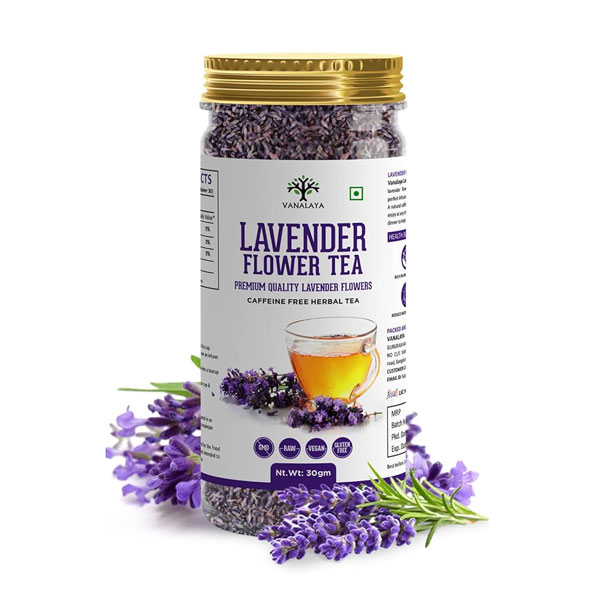
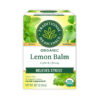
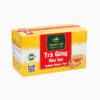

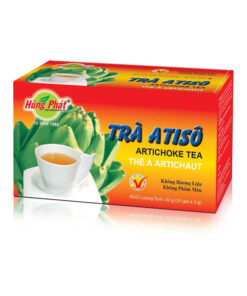
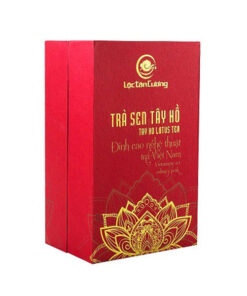




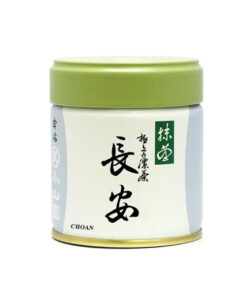
Reviews
There are no reviews yet.